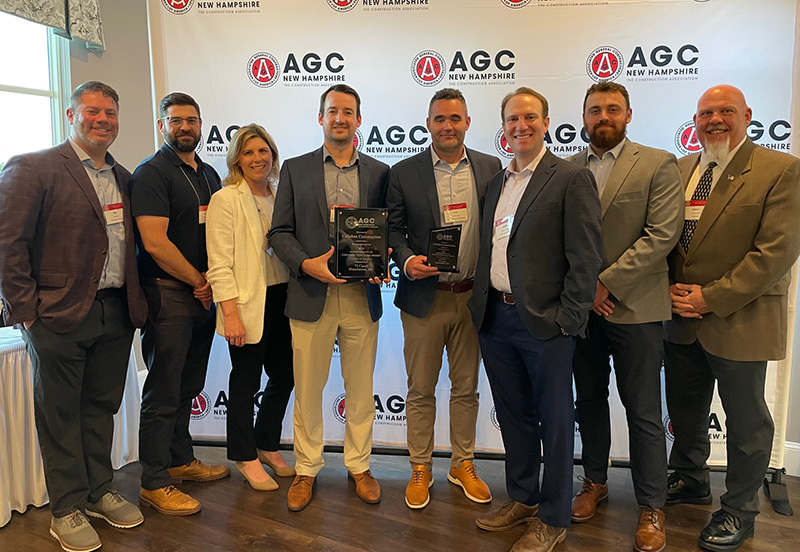News: Construction Design & Engineering
Posted: April 17, 2008
Will green building practices become a requirement for new construction projects?
The U.S. Green Building Council (USGBC) recently announced that Conn. is one of the first states to require large construction projects to use "green" or environment-conscious building practices. Beginning in January 2009, all construction projects of more than $5 million, both public and private, will be required to meet the green building code standards. By January 2010, this will include all renovation projects costing more than $2 million.
According to USGBC representatives, the state's requirements are equivalent to the Leadership in Energy and Environmental Design (LEED) Green Building Rating System's silver standard. LEED is the nationally accepted benchmark for the design, construction and operation of high performance green buildings. The new Conn. requirement is the latest in an increasing trend as federal, state and local government regulations drive market demand for building green.
Why the lean to green? American public opinion appears to be headed for "sustainability." In the Fall 2007 XL Insurance newsletter, Communiqué, it is reported a recent study shows nearly 3/4 of consumers believe large companies should be required to prepare an annual statement concerning the business' impact on the environment.
There is no doubt that Conn.regulations will impact the retail development business in that state, and others as it gains momentum. Although retail stores and restaurants currently make up only about 1.5% of registered LEED-certified projects, the retail industry has realized the business value associated with "going green." Sustainable or green design provides economic as well as environmental benefits, and consumers are increasingly demanding that retailers incorporate green or sustainable practices into their operations. Again, the Communiqué reports that sustainability is also being driven by government initiatives.
Many retailers have already incorporated green building policies, even if they haven't gone as far as the LEED certification. This includes use of recycled building materials during construction, more use of sunlight for energy purposes, and re-use of certain waste products produced by their retail operations once the facility has opened.
The past year has seen a number of retailers and retail organizations form committees or task groups to determine a better way to integrate green or LEED standards into their development process. Regency Centers, last fall announced a partnership with the USGBC to create a LEED certification process specifically for shopping center developments. As part of a company-wide green building initiative, Regency has planned ambitious LEED certification goals for its new developments as well as implementing baseline sustainability measures and initiatives in existing properties and its corporate operations.
The costs for LEED certification for new construction appear to be less than originally conceived, accounting for an increase of about 1-5% in some parts of the country. However, in the Boston area, the price tag is actually significantly higher. One reason for the low percentage of LEED-registered retail projects is that many retailers have found that the LEED application requirements, with guidelines originally intended for commercial and industrial buildings, are cost-prohibitive. A LEED application had to be filled out for each store, so if a retailer rolls out a portfolio of several branches or stores, a large amount of time and money would have to be dedicated to complete the required documentation for each store in the portfolio.
This obstacle for retailers was not overlooked by the USGBC. The organization recognized the need for a streamlined LEED-certification process for retailers, investors, financial institutions, hoteliers, and others involved high volume building portfolios.
In 2006, the organization launched a pilot portfolio program with one of the goals to provide cost-effective, streamlined certification processes that would reduce the documentation requirements where possible. Retail-specific LEED standards, designed with the help of executives from the likes of Starbucks and Target, address green power, water-efficient landscaping and indoor-pollutant control among others.
While the program is open to all types of businesses, the pilot program participants, working with the USGBC, have focused on developing and testing a volume certification process. According to the USGBC, volume certification will streamline the certification process by "recognizing standardized and consistently delivered performance throughout a portfolio of new or existing buildings." The USGBC plans to officially launch the "LEED for Retail" program in mid-2008.
With the increasing market demand for green building, it comes as no surprise that many major retailers are taking significant steps toward integrating sustainability into their businesses. Done properly, sustainable building benefits the environment and can save money for owners.
Michael Burke is senior principal at JGI Eastern, Inc., Mancheester, N.H.
MORE FROM Construction Design & Engineering
Nobis Group awards Robinson and Moreira STEM scholarships
Concord, NH Nobis Group, a 100% employee-owned consulting firm specializing in engineering and environmental solutions across the Northeast, has named the recipients of its 2025 STEM Scholarship: Andie Moreira of

Columns and Thought Leadership

The rise of incubators and co-working spaces: The latest in life sciences - by Matt Combs
In recent years, the life science industry has witnessed a shift in how companies operate and innovate. One of the key driving forces behind this transformation is the emergence of incubators and co-working spaces specifically tailored to meet the unique budget and schedule needs of startups.

The design-build advantage: Integrated interior design solutions - by Parker Snyder
When it comes to corporate interior spaces for both commercial and industrial projects, partnering with a design-build firm with in-house interior design services can offer clients many benefits. Unlike traditional delivery methods where interior designers operate independently from the design and construction teams, often creating a longer project timeline as cost negotiations and revisions ensue

Ask the Electrician: Is summer a prime time for commercial electrical maintenance?
The answer is “Yes!” While January marks the official new year, many businesses view September as a fresh start. This makes summer an ideal time for commercial property owners to schedule long-term electrical maintenance projects.

Careers in Construction Month focus on training and safety - by Joe Camilo
October is Careers in Construction Month, and rarely has it been more consequential. According to our chapter’s national parent organization, the construction industry needs to attract half-a-million new workers in the coming year to meet demand. Addressing that need is a huge job, but we at ABC MA are trying to do our part.







.png)